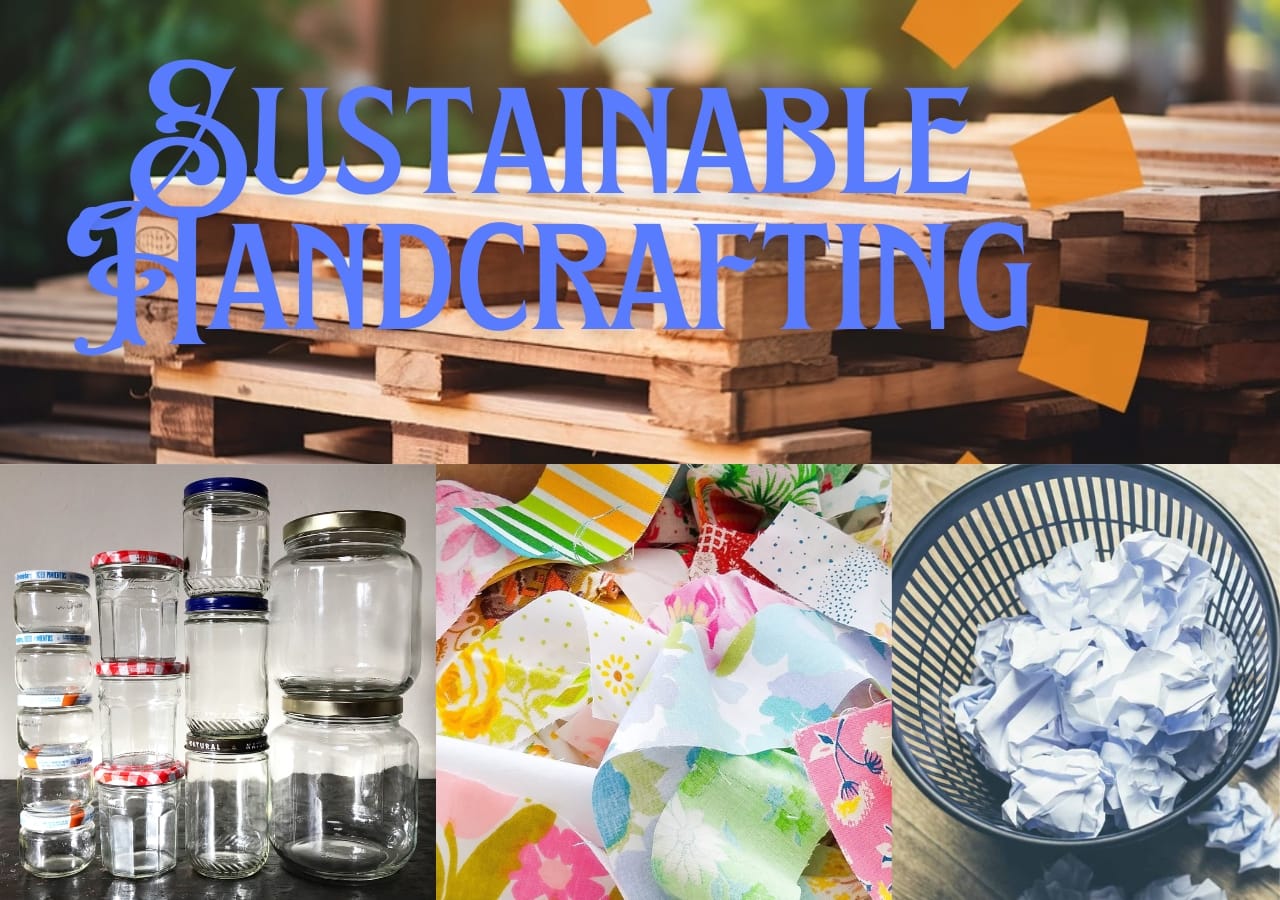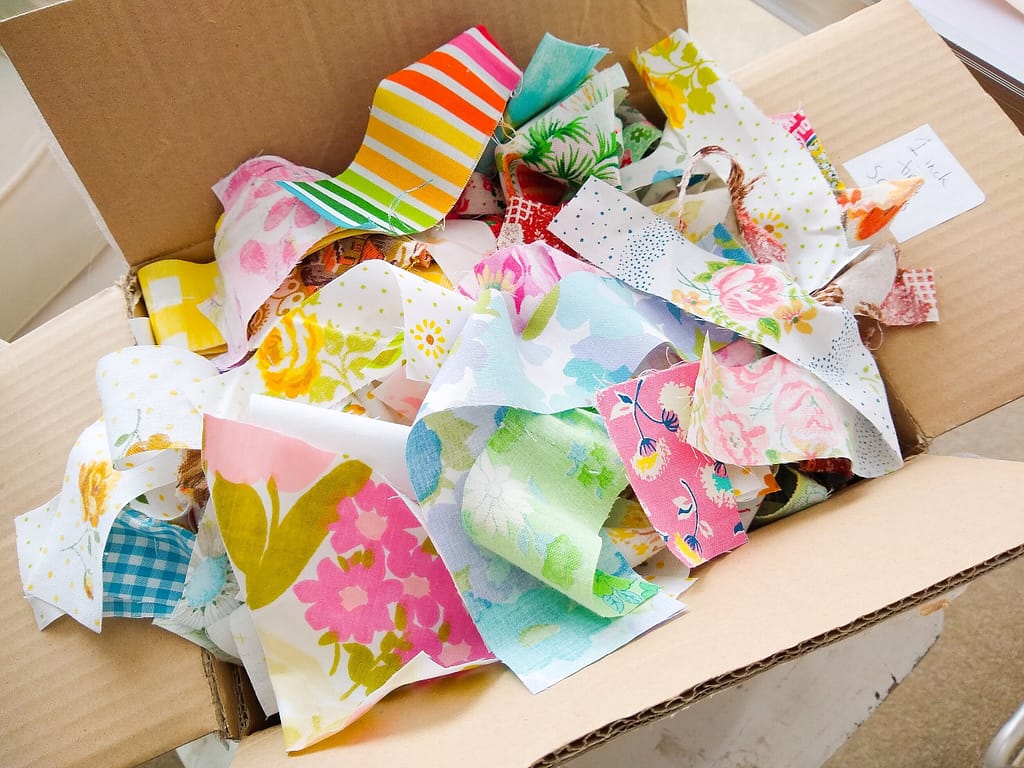Sustainable Handcrafting: Eco-Friendly Practices for Modern Makers

Sustainable handcrafting refers to the practice of creating handmade items while prioritizing environmentally friendly methods and materials.
This thoughtful approach not only minimizes waste but also promotes the use of organic, recycled, and upcycled resources, which helps to decrease the demand for new materials and reduces the strain on our planet’s resources.
In today’s world, where environmental concerns are more pressing than ever, embracing sustainable practices in handcrafting is crucial. It provides an opportunity for artisans and makers to actively engage in the fight against climate change by reducing their ecological footprint through mindful choices.
Each handmade item crafted with sustainability in mind is a step towards a healthier planet, allowing creators to express their artistry while making a positive impact.
Moreover, sustainable handcrafting encourages a deeper connection to the materials and processes involved. By choosing local and sustainable sources, makers can support their communities and reduce the carbon footprint associated with transportation.
This approach fosters a greater appreciation for the craftsmanship involved, as well as the natural world from which inspiration is drawn.
Ultimately, by choosing sustainable handcrafting methods, we can ensure that our passions align with the values of preservation and respect for nature. This not only enhances the personal satisfaction that comes from crafting but also serves as a powerful statement about the importance of sustainability in our daily lives.
Together, we can create a movement that celebrates creativity while protecting the environment for future generations.
- Discover how mastering basic handcrafting techniques can contribute to more sustainable practices by exploring “Master the Basics: 9 Essential Handcrafting Techniques for Beginners and Inspiring Projects to Get You Started.”
Table of Contents
1. Understanding Sustainability in Handcrafting
Sustainable Materials
Sustainable materials are at the heart of eco-friendly handcrafting. These materials include organic options, such as cotton or wool that are grown without harmful pesticides and chemicals, as well as recycled resources like paper, glass, and plastics that have been repurposed for new projects.
By utilizing these materials, crafters not only reduce their reliance on virgin resources but also contribute to a circular economy that values reuse and recycling.
Environmental Impact
The benefits of sustainable handcrafting extend beyond personal choices; they have a positive impact on the environment as well. Using sustainable materials helps to lower pollution levels, conserve water, and protect ecosystems from the damage associated with conventional manufacturing processes.
Furthermore, sustainable handcrafting practices often result in less waste, as makers focus on the efficient use of materials and creative ways to repurpose remnants.
Ultimately, choosing sustainable options leads to a healthier planet and a more responsible approach to the art of handcrafting.
2. Eco-Friendly Techniques
Low-Impact Crafting Methods
When it comes to sustainable handcrafting, employing low-impact crafting methods is essential. Using materials like water-based adhesives and natural dyes can significantly lessen the environmental impact of your projects.
Water-based adhesives are non-toxic and do not release harmful chemicals into the air, making them safer for both the creator and the environment. Similarly, natural dyes derived from plants, fruits, and minerals offer vibrant color options without the pollution associated with synthetic dyes.
By choosing these eco-friendly alternatives, crafters contribute to a healthier atmosphere while maintaining the quality and aesthetics of their work.
Waste Reduction Tips
In addition to selecting the right materials, makers can implement simple tips to reduce waste throughout the handcrafting process.
First, planning your projects carefully can help in measuring materials accurately, preventing excess. Consider using scrap pieces for smaller elements rather than discarding them. Additionally, composting organic waste generated from projects can further minimize the environmental footprint.
Engaging in practices like sharing surplus supplies with fellow crafters or donating unused items can also foster a community approach to reducing waste.
By integrating these eco-friendly techniques into crafting routines, artists can create beautifully crafted items while staying committed to sustainability.
3. Sourcing Sustainable Materials
Finding eco-friendly supplies is the first step towards more sustainable handcrafting.
Many local craft stores now offer organic and recycled materials, making it easier for makers to access sustainable options.
Online platforms that specialize in eco-friendly products are also a great resource. Websites dedicated to sustainable handcrafts provide a wide variety of supplies, from natural fibers to reclaimed wood.
Additionally, farmers’ markets and community events often feature local artisans who sell ethically sourced materials, allowing crafters to discover unique items while supporting their community.
Supporting local and ethical suppliers is crucial in promoting sustainability.
When crafters choose to purchase from local businesses, they help strengthen their community’s economy and reduce the carbon footprint associated with long-distance shipping.
Ethical suppliers usually prioritize environmentally friendly practices and fair labor standards, ensuring that the materials are not only sustainable but also responsibly sourced.
By consciously selecting where to buy supplies, makers can enrich their handcrafting experience and contribute positively to the environment and society.
4. Creative Upcycling Ideas




Upcycling is a wonderful way to breathe new life into old materials, turning them into something beautiful and functional.
Here are some examples of upcycling projects tailored for various handcrafts:
- Fabric Scraps: Transform leftover fabric into patchwork quilts or reusable shopping bags. This not only reduces waste but allows for creative expression through unique designs.
- Glass Jars: Reuse glass jars as storage containers, candle holders, or decorative vases. They can be painted or adorned with twine to create a chic look for your home.
- Wood Pallets: Repurpose old pallets into furniture, such as coffee tables or outdoor seating. A simple sanding and stain can yield stunning results.
- Old T-Shirts: Cut t-shirts into strips to create braided rugs or even yarn for knitting projects. This gives a new purpose to garments that may otherwise be discarded.
- Paper Waste: Turn excess wrapping paper or cardboard scraps into handmade cards or gift tags, adding a personal touch to your gifts while keeping waste to a minimum.
The benefits of repurposing materials go beyond saving resources.
Upcycling helps to promote sustainability by reducing the amount of waste that ends up in landfills. It also ignites creativity, allowing crafters to think outside the box and innovate.
Each upcycling project serves as a personal statement about valuing resources and making conscious choices while creating something uniquely your own through handcrafting.
5. Building a Sustainable Crafting Community
Creating a sustainable handcrafting community is vital for fostering a culture of eco-consciousness and support among makers.
One of the best ways to connect with like-minded individuals is by joining local crafting groups or workshops focused on sustainability. These gatherings provide opportunities for crafters to share skills, techniques, and experiences while learning from one another.
Additionally, online platforms and social media groups dedicated to sustainable handcrafting can help expand your network beyond geographic boundaries.
Collaborative projects can also enhance the handcrafting experience, allowing participants to pool their skills and resources for a shared goal.
Organizing events such as community upcycling days, material swaps, or eco-friendly craft fairs can inspire creativity while promoting sustainability. Sharing resources like tools, materials, and knowledge not only reduces costs but also strengthens the bond between crafters.
By coming together to support one another, crafters can create a vibrant community dedicated to making positive environmental impacts through their handicrafts.
Conclusion
Sustainability in handcrafting is essential for protecting our environment and promoting a healthier planet. By choosing eco-friendly materials, reducing waste, and engaging in practices like upcycling, crafters not only enhance their creative expression but also contribute to a more sustainable future.
Every small effort counts, and by making conscious decisions in our crafting endeavors, we can minimize our impact on the environment.
We encourage all makers to embrace these eco-friendly practices, share their knowledge within the community, and inspire others to join in on the journey toward sustainable crafting.
Together, we can create not just beautiful items, but also a positive change for our world.





